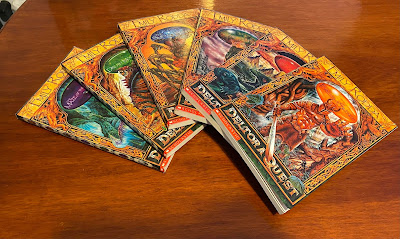It is always intriguing to discover the inspiration behind stories as they blossom from an idea to into something tangible. This week, Irene Cowell shares an early collaboration in the creation of The Bungles.
One morning “The Bungles” arrived, ready for action when I awoke. My husband, artist Ken Cowell and I had already discussed a collaboration: he would illustrate, I would write, a children’s Big Book. This book would be about our son, our first born, although he would already have been about nine years old. As a little child he’d been demanding; the human equivalent of a Perpetual Motion Machine, and just like one of his TV favourites, the 80’s character Monkey, “his nature was irrepressible.” He loved running away from me in very public spaces. One wintry day, when he was about three or four years of age, he ran fully clothed into the ocean. I was following, carrying a plastic ride-on toy he’d discarded. I waded in wearing my best boots, to pull out my very soggy child. As he grew older and began playing football, there was no need to chase him. We thought he was over the running game! That is until the day he “ran away”. The sad thing was we didn’t find the note he’d left until after his friend brought him home. But he hadn’t run too far.
Why, you might ask, am I recounting these painful, slightly comical memories? It’s possible you’re even shaking your head at our ineptness as parents. But this is where the Bungles came from. We could imagine these potato-like creatures that would invade our hero’s home after dark. Each night of the week they would return, making more trouble, until mum’s arrival turned the chaos into fun.
 |
| Image from The Bungles. © Ken Cowell |
The book with Ken’s joyous black and white illustrations was finished around 1988. I read it at school, children loved it. It took on a life of its own. I adapted the Bungles for teaching reading skills. We had fun singing the Bungles’ Song. We danced to it with our teddies so we could be naughty like the Bungles and “throw them down the stairs”. One of my Kindergarten boys returning a copy of the book he’d taken home told me with big expressive eyes, “Guess what, the Bungles came to my house last night!” I didn’t dare ask what they’d done. I used the Bungles to illustrate teaching techniques at a Literacy workshop. Later It morphed into “The Bungles- the Musical”, at a local schools’ concert. With Ken’s pop art props and a class of enthusiastic performers the Bungles came to life again.
 |
| Image from The Bungles. © Ken Cowell |
No one ever questioned-“ Where did the Bungles come from?” Or- “What did the story mean?” But even though it was never articulated, the images and story of the Bungles was always met with enthusiasm. Recently I unpacked the slightly tattered original that had survived the move to another state and a very different time. The illustrations still had as much life in them as they had about thirty years ago. They could enthuse another generation of young readers.
Some fun facts: As a teenager our son recorded himself on guitar and keyboard for the musical version. In the 90’s he was performing in a Punk Band.
And just so you don’t have to ask…these days he’s a great Dad, and that ”irrepressible” grin can still be seen.
Irene Cowell
Author/illustrator of Y/A Fantasy
Rainbow Island Tapestry of Time, Forty South Publishing.













